The other evening I made another trip to Michael's garden to dig some more bamboo. As a reminder Michael has been growing a dozen or so varieties of bamboo in his garden for over 20 years, so has a wealth of experience with growing bamboo and keeping it controlled.
That's the plant we dug from. He wants to move it to the left a bit, so we took some off the right edge and he'll just let it spread to the left over time. We're not sure of the ID of this bamboo, but it seems like a Pseudosasa, most likely Pseudosasa japonica -- commonly known as "Arrow Bamboo".
Here are the divisions I took:
The divisions are not large, but some of them should do well. Although the culms (canes) are just bare sticks right now, they should produce branches and leaves pretty soon. Putting the smaller divisions in pots isn't too interesting, so I'm not going to show that process here (put division in pot, add more potting mix, water). I do want to take a look at this division though:
It looks like a good-sized rootball, but upon closer inspection and because of the way that this plant was growing, I'd like to see what's going on in this clump. I can see some small pieces of rhizome, and I suspect that there are several different pieces in this lump of soil. That's not ideal for potting, as each rhizome piece will create a separate plant (if it survives) and you'll end up with multiple plants in the same pot. What you really want is a single plant in each pot, so I need to get all of the soil off -- but how?
Luckily bamboo roots are tough so I can use a strong stream of water to wash all of the soil away.
After some of the soil is removed you can see that there are a lot of roots in there! (Tip: make sure you do this somewhere that you don't mind having a muddy, mucky mess. The middle of the driveway is probably not a good choice.) With most of the soil removed, I can start gently pulling the different pieces apart:
After more untangling, here's what we end up with:
Several different rhizome pieces with roots, some without roots, and some loose roots. To have a successful plant that has a chance of living, producing shoots, and growing into a larger plant you ideally want a division that consists of an existing culm that contains green leaves, a good length of rhizome that contains "buds", and good roots. If you don't have a culm that contains leaves that's OK, but the rhizome must have buds and roots. The loose roots won't grow, so right into the compost pile they go.
This piece won't make it:
It looks like a shoot with a few thick anchor roots, not the fine feeder roots that are needed. It's not a rhizome piece either. Into the compost pile as it will never grow. This one too:
Although it is a rhizome, it has too few roots. Compost pile!
This one has small culms and leaves, but I'm not sure if it has enough rhizome, or if the short length of rhizome has any buds. I'll pot it up and see what happens though.
I've mentioned them a few times already, but what exactly are rhizome "buds"? The buds are what will either turn into new shoots, or new rhizomes which can then produce new shoots (from its buds). Here's an example of a rhizome section that has a couple of buds:
Those actually are starting to "swell" and turn into shoots. I can tell they want to be shoots and not new rhizomes because they're turning upward. This piece also shows how a bud can produce a new rhizome. The part I'm holding is the old rhizome, and the section that contains the circled bud is the new rhizome. The one concern about this division is it doesn't have too many roots. I'll pot it up and see what happens though.
This piece should be OK too:
As you can see it has at least one bud, but ideally I want it to have more. Since the bud is on the green part of the rhizome that must have been above ground and exposed to sunlight, I expect that circled bud to turn into a shoot or a branch -- something that produces leaves. Then it still needs one below-ground bud that can turn into a rhizome. The rhizome is the only way that the plant can spread and produce more culms.
At first look this one appears to be good:
A closer look though, and the nodes of the rhizome don't appear to have any buds!
I'm pretty sure that the buds won't form later -- if they're not present now, that section of rhizome won't be able to produce any later. No buds means no culms or new rhizomes from this section. If this were the only section of rhizome I had from this plant I would probably pot it up and see what happens, but since I have several other divisions I'm going to pass on this one: into the compost pile!
And that's it! All potted up.
What initially looked like something that I should stick in a big pot has now turned into several smaller pots. This doesn't mean that I'll have smaller plants now. If I had just stuck the large rootball into a big pot I would have had the same situation: several smaller plants. The advantage of separating them is that they'll no longer be forced to all grow in the same pot. Each now has the opportunity to grow into a large plant without competition from the others.
I actually have one more division to pot up (the one with the tallest culms), but since it's starting to rain I'm going to do that tomorrow, and probably won't write about it -- unless I see something really cool in the process. Although isn't anything to do with bamboo automatically really cool? I think so. =)




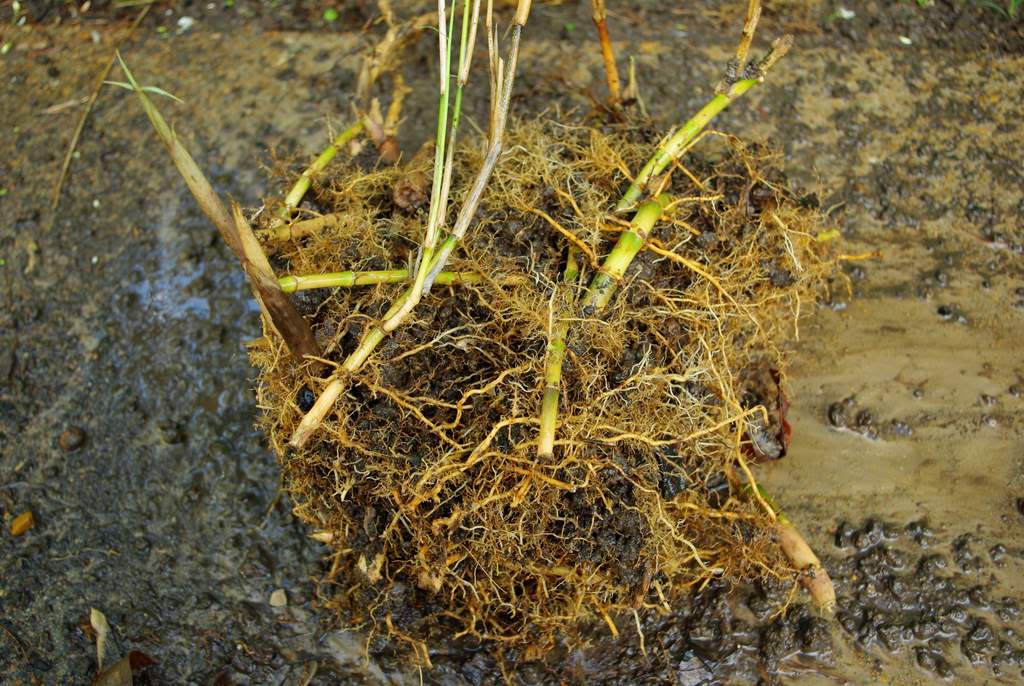
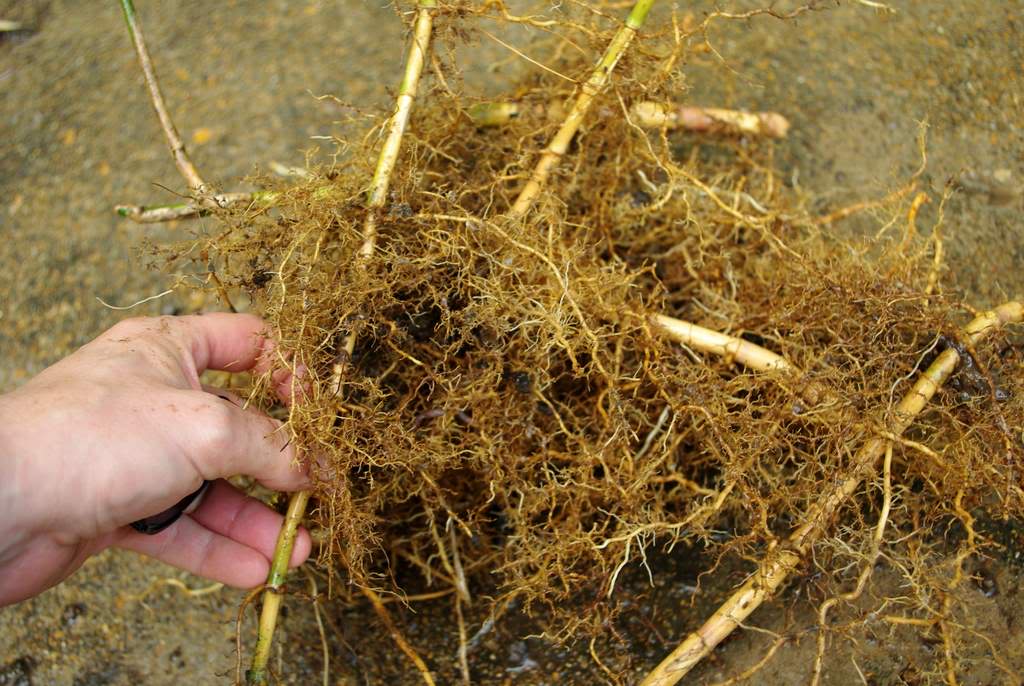





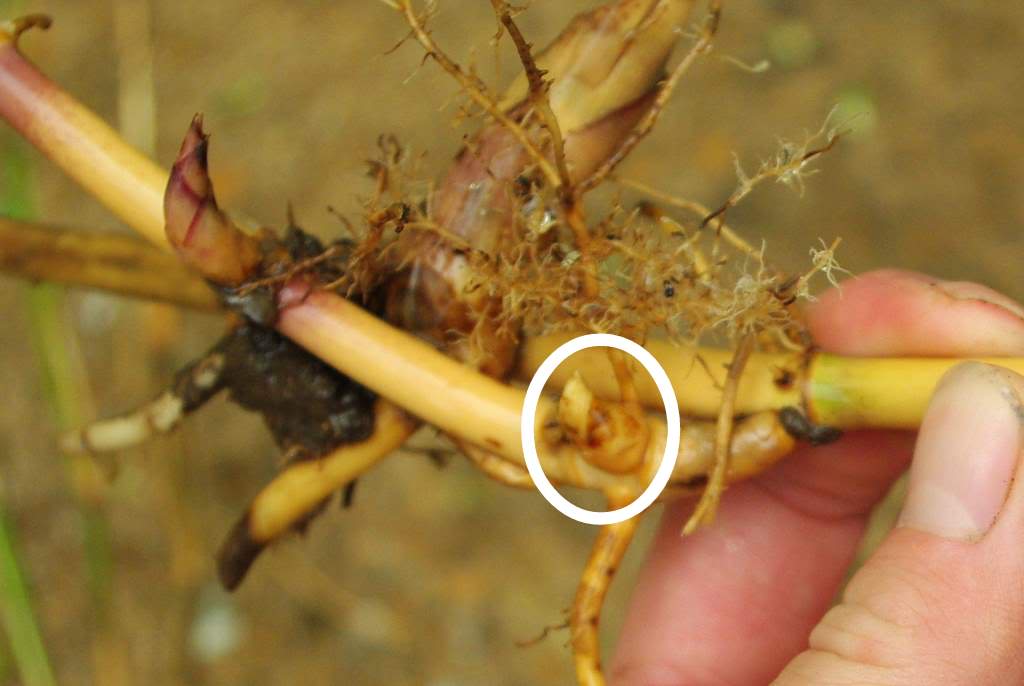

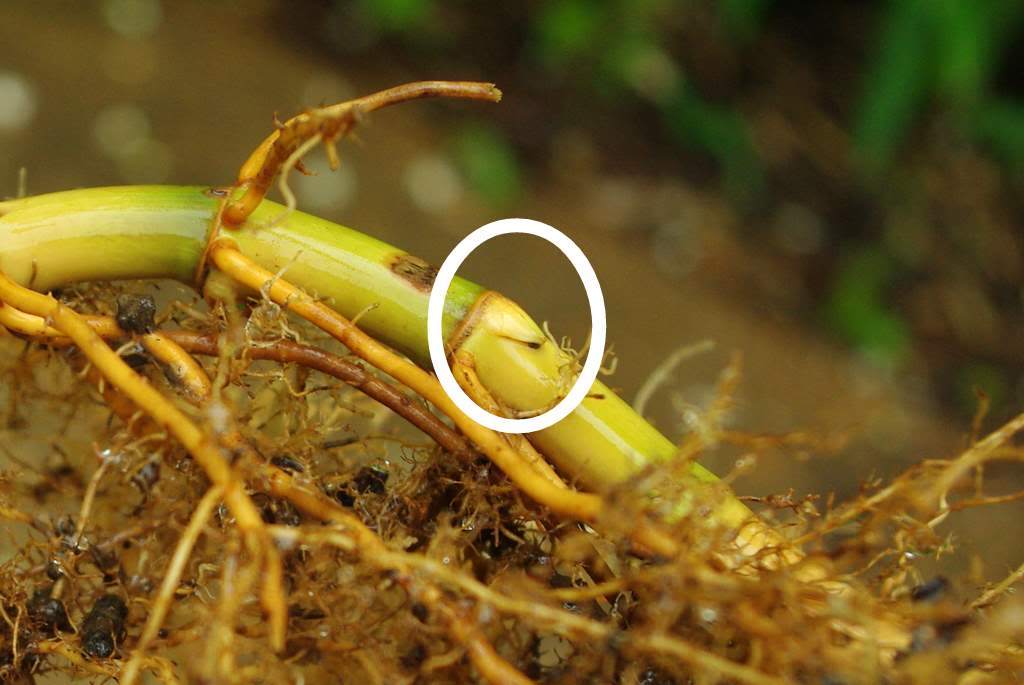

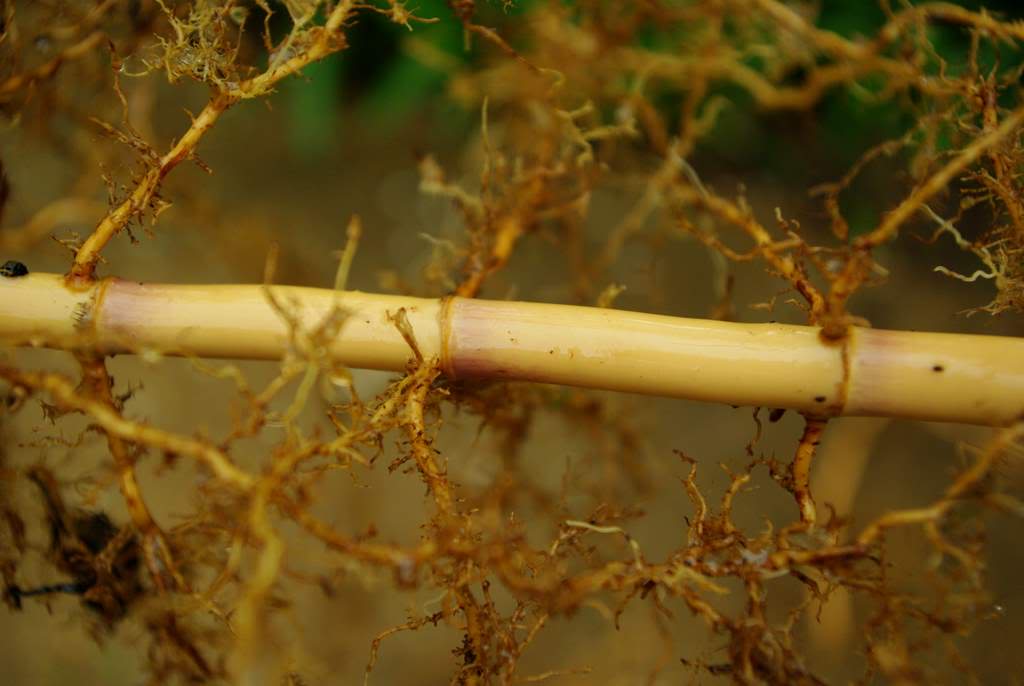

No comments:
Post a Comment